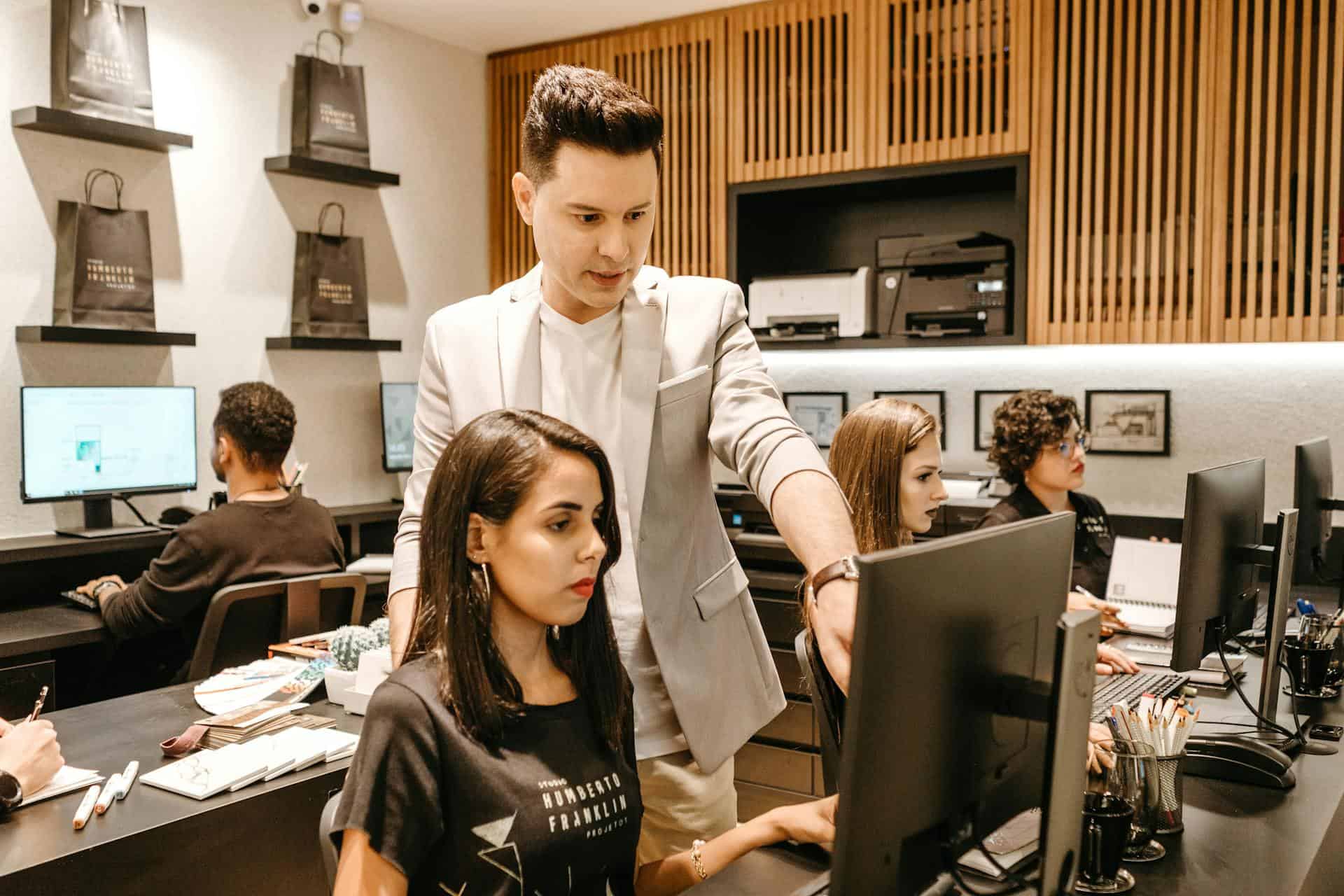Managing Humans Is Harder Than Managing

At the forefront of workplace transformation stands Thomas Philippart de Foy, Chief Innovation Officer at Appspace, with a candid revelation: managing humans is far more complex than managing Gen AI. His perspective is grounded not in theory, but in twelve years of immersive leadership at Appspace and a legacy that traces back to his time at Cisco’s emerging technology group. As Appspace weaves Gen AI into the fabric of workplace communication and management, Thomas offers a rare, behind-the-scenes look in his interview with me into why it’s not the algorithms that test leadership most—it’s the people.
Unlocking Gen AI’s Operational Potential
While much of the workplace world is still figuring out how to tiptoe into Gen AI adoption, Appspace has charged full speed ahead. Internally, the company is already deploying Gen AI across nearly every team—from support ticket automation to code generation, internal communications to content narration. The company even uses its own app to communicate with its global employee base, applying Gen AI to curate tone, generate imagery, and translate and narrate content in multiple languages.
Externally, Appspace has done something rare: integrated Gen AI at the platform level, not as a bolt-on feature. This deep-rooted approach enables modular AI use across diverse customer-facing products. For example, a user can create a story in the platform, auto-generate a fitting image, request tone and length adjustments, and even receive AI-crafted summaries, captions, and tags. All this, in real time, across multiple formats—mobile, web, digital signage—and in multiple languages.
Yet the ambition doesn’t stop there. Thomas hints at what’s next: automated praise systems driven by user input, live video with multilingual narration, and location-aware content targeting. The scope is vast and future-forward. But as powerful as Gen AI has proven to be, Thomas is quick to remind us: “The untouched potential of the human being is even greater.”
Resistance, Integration, and Control: The Real Obstacles
Surprisingly, Thomas reports minimal resistance to Gen AI within Appspace’s own walls. The company culture is steeped in innovation and openness. But not all organizations share that mindset. “A year ago, we saw resistance from large corporations. That’s almost gone,” he says. “Every company now has an AI strategy.”
For companies still navigating the murky waters of AI integration, Appspace offers flexibility and governance. Organizations can plug in their own AI models or use Appspace’s, with the assurance that all content remains within the client’s environment. Nothing is shared externally. No data leaks. No corporate risk.
This is crucial as businesses grow wary of hallucinations, bias, and security vulnerabilities. By giving clients total control over their data and the option to integrate proprietary models, Appspace offers a rare antidote to the fear that often stalls AI adoption.
Still, Thomas acknowledges that the true barrier isn’t the AI. It’s ensuring humans use it well. “There’s a misperception that you’re educating your AI. No. You’re educating your users,” he emphasizes. His team now incorporates AI training into onboarding, teaching users how to create better prompts, reuse successful outcomes, and optimize intent formulation.
Human Complexity Outpaces Any Algorithm
In Thomas’ view, the more challenging endeavor isn’t aligning AI with corporate structure—it’s managing the unpredictability and creativity of human users. Clients are constantly repurposing Appspace’s tools in ways the company never envisioned. He recalls how one logistics giant turned a desk-booking feature into a shuttle reservation system. “It’s amazing to see how customers find a way to use AI to do something we hadn’t thought about.”
This creativity is a double-edged sword. It’s thrilling, yes. But it demands continuous engagement, education, and adaptability from the Appspace team. That makes human management an ongoing, high-stakes project—where Gen AI, by contrast, executes flawlessly when given the right inputs and constraints.
This sentiment echoes broadly across industries. AI learns and improves predictably. People, on the other hand, bring with them a rich mix of vision, resistance, misunderstanding, and ingenuity. That’s what makes leadership so difficult—and so vital—in an AI-integrated workplace.
The Future Is Personalized, Multilingual, and Always On
Thomas’ eyes are fixed on a near-term future where Gen AI enables highly personalized, location-specific workplace experiences. Imagine arriving at your desk to find content on a nearby screen tailored precisely to your role, mood, language preference, and meeting schedule. It’s not far off. Appspace is already experimenting with connecting desk bookings to content algorithms to dynamically deliver relevant information in real time.
He’s also bullish on video. Not just passive live streams, but events enriched with AI-driven translations and captions in multiple languages, offered live. “Creating content is one side,” he says. “Consuming content effectively is the other.” And ensuring global teams can understand and absorb information in their native language isn’t just convenient—it’s foundational to equity and engagement.
Even as the platform scales toward video, animation, and richer personalization, Thomas remains realistic about current limitations. “Image generation still struggles with corporate quality,” he admits. “We encourage clients to draw from licensed image databases instead of relying on generated visuals.” That humility—recognizing where AI still falls short—is part of what makes Appspace’s approach so trusted among its enterprise clients.
The Bottom Line: Technology Isn’t the Hard Part
Gen AI might be rewriting the rules of workplace communication and management, but it’s not the wild card. Humans are. The real art lies in understanding how to guide and unlock the potential of employees, clients, and stakeholders as they navigate these new tools.
Thomas sums it up succinctly: “Managing humans is harder than managing Gen AI.” And in a world obsessed with digital transformation, it’s a crucial reminder. No matter how sophisticated the software, people remain the heart—and the greatest challenge—of every innovation.
Key Take-Away
Managing people—not AI—is the true challenge in digital transformation, as human complexity, creativity, and resistance far outweigh the predictable nature of Gen AI systems. Share on XImage credit: Jonathan Borba/pexels
Dr. Gleb Tsipursky was lauded as “Office Whisperer” and “Hybrid Expert” by The New York Times for helping leaders use hybrid work to improve retention and productivity while cutting costs. He serves as the CEO of the boutique future-of-work consultancy Disaster Avoidance Experts. Dr. Gleb wrote the first book on returning to the office and leading hybrid teams after the pandemic, his best-seller Returning to the Office and Leading Hybrid and Remote Teams: A Manual on Benchmarking to Best Practices for Competitive Advantage (Intentional Insights, 2021). He authored seven books in total, and is best know for his global bestseller, Never Go With Your Gut: How Pioneering Leaders Make the Best Decisions and Avoid Business Disasters (Career Press, 2019). His cutting-edge thought leadership was featured in over 650 articles and 550 interviews in Harvard Business Review, Forbes, Inc. Magazine, USA Today, CBS News, Fox News, Time, Business Insider, Fortune, and elsewhere. His writing was translated into Chinese, Korean, German, Russian, Polish, Spanish, French, and other languages. His expertise comes from over 20 years of consulting, coaching, and speaking and training for Fortune 500 companies from Aflac to Xerox. It also comes from over 15 years in academia as a behavioral scientist, with 8 years as a lecturer at UNC-Chapel Hill and 7 years as a professor at Ohio State. A proud Ukrainian American, Dr. Gleb lives in Columbus, Ohio. In his free time, he makes sure to spend abundant quality time with his wife to avoid his personal life turning into a disaster. Contact him at Gleb[at]DisasterAvoidanceExperts[dot]com, follow him on LinkedIn @dr-gleb-tsipursky, Twitter @gleb_tsipursky, Instagram @dr_gleb_tsipursky, Facebook @DrGlebTsipursky, Medium @dr_gleb_tsipursky, YouTube, and RSS, and get a free copy of the Assessment on Dangerous Judgment Errors in the Workplace by signing up for the free Wise Decision Maker Course at https://disasteravoidanceexperts.com/newsletter/.

